|
Symptoms
|
Cause
|
Description
|
| Fish may dart and gasp. |
Acidic Water |
Acid from fish wastes or decayed food. Acidic water can iritate gills and skin. |
| White water line. Plants die, fish have frayed fins. Alkaline water can destroy gill and fin tissues. Ammonia becomes more toxic. |
Alkaline Water |
Seashells or limestone in tank or hard water supply |
| Fish die. Water may be cloudy. |
Ammonia in Water |
Product of decaying wastes. |
| Threadlike worm hanging from fish. Base of anchor worm may be red. |
Anchor Worm |
A parasitic crustacean (Lernaea). |
| Quarter inch bubble like lumps slowly moving on skin and fins. |
Argulus |
A parasitic crustacean. Sometimes Ergasilus also. |
| Fish floats with fins closed. |
Betta Pinch Fin |
Gill parasites. |
| Small black specks on skin. |
Black Spot |
Small fish worms (Diplostomulum). |
| Red streaks on fins, especially goldfish. |
Parasites or Bacterial Infection |
Gyrodactylus parasites (monogenetic trematodes*), possibly bacterial septicemia |
| Fish dying within 24 hours. Gills become brown. |
Chloramine in Water |
Water company adding chloramine as a substitute for chlorine. |
| Fish dart about. gills pump furiously. |
Chlorine in water supply |
Chlorine added to water supply to kill bacteria. |
| Fins held close to body, especially in livebearing fish. |
Clamped Fins |
Gill or body parasites. |
| Water not crystal clear in established tank. |
Cloudy Water |
Wastes, small animal and plant life. Possibly over feeding. |
| Small particles suspended in water causing a cloudy look. |
Cloudy Water in New Tank |
Floating silts from gravel especially newly set up tanks. |
| White cotton sprouting from fins or body. |
Fungus, possibly Bacteria |
A bacteria, Flexobacter (Chondrococcus) or Fungus |
| Fish act very uncomfortable. |
Contaminated Tank water |
Chlorine, chloramine, copper or manufacturing oils in the water. |
| Grey film on all or part of body. |
External Parasite |
External protozoan parasite (costia necatrix). |
| Gills hang partly open at all times |
External Parasites (Dactylogyrus) |
Small gill parasites (monogenetic trematodes). |
| Fish darts about wildly and may smash into glass. |
Discus Head Worms |
Parasitic protozoa in sinus canals of head. |
| Fish bloated with scales standing out. Fish resembles a pine cone. |
Dropsy |
Kidney or Liver Damage (possibly both) |
| White film on eyes. |
Eye Cloud |
Eye injury. From handling or breeder fighting, possibly bacterial Infection |
| Fins ragged with jelly at edge of ragged part. |
Fin Fungus |
This is not a disease exactly, but can be cured by improving water quality |
| Fins eaten away with redness at base of bad area. |
Fin Rot |
Sprolegnia fungus with Pseudomonas or Aeromonas bacteria. |
| Fish swim aimlessly. May have spasms. |
Bacterial Infection |
Internal Flavo Bacteria infection |
| Small lumps under skin or on fins. |
Flesh Worms |
Parasitic worms. |
| A light grey cottony growth or patch on any part of the fish. |
Fungus (grey) |
A parasitic fungus, Saprolegnia. |
| A white cottony growth or patch on any part of the fish. |
Fungus (white) |
A bacteria, Flexobacter (Chondrococcus) Columnaris. |
| Open sores on Gouramis or other anabantids. |
Bacterial Infection (Furunculosis) |
Aeromonas salmonicida bacteria. |
| Gills hang partly open and may pump fast. Gills may pump fast. Gills may appear red. |
Gill Flukes |
Small gill parasites (Gyrodactylus) monogenetic trematodes. |
| Fish rocks back and forth while staying in place. |
Gourami Disease |
Dactylogyrus parasites (monogenetic trematodes*). |
| Skin looks grey in patches. |
External Parasite |
Costia necatrix parasites. |
| Fish scrape on objects in tank. |
External Parasite |
Gyrodactylus parasites (monogenetic trematodes*). |
| Red steaks on fins usually near body with no sign of skin damage. |
Hemorrhagic Septicemia |
A bacteria, Aeromonas (liquefaciens) hydrophylia. |
| Tiny tree-like animals attatched to objects in tank. |
Hydra |
Carivorous microanimal |
| White sugar-like crystals on fins or body of fish, fish scrape against objects in tank |
External Parasite (ICK aka ICH, possibly others)) |
Ichthyophthirius multifiliis, a parasitic protozoan. |
| Fish are thin and act listless |
Internal Parasites or Internal Bacterial Infection |
Tiny internal parasites or Bacterial Infection (wasting diesease) |
| Fish may go to top or bottom or dash about when first introduced to the tank. |
Tank water is vastly different from original source water |
Change in water from which fish are first acclimated. |
| Stains on glass or ornaments. |
Iron In Water Supply |
Dissolved iron in water supply. |
| Insoluble white deposit or water line. |
Lime Deposits on Glass |
Caused by lime, a mineral found in water supplies or from salt buildup. |
| Fish stay in one place buy wiggle, wag, or shimmy. |
Livebearer Disease or Molly Disease |
Water lacks electrolytes needed for normal metabolism. |
| White cotton sprouting from mouth sides. |
Mouth Fungus |
A bacteria, Flexobacter (Chondrococcus). |
| Flesh eaten away around mouth. |
Mouth Rot |
Saprolegnia fungus with Pseudomonas or Aeromonas bacteria. |
| Color fades from red line. Line may turn yellow. |
Neon and Cardinal Disease |
A parasitic protozoan, Plistophora hyphessobryconis. |
| Fish dart about. Gills pump furiously after a water change. |
Dissolved gasses or metals in the water. |
Dissolved gasses or metals in the water. |
| Body skin of fish appears dusty in yellowish or grey patches. |
Oodinium (also called VELVET or RUST) |
A parasitic algae, Oodinium limneticum. |
| New Fish act stunned or gasp at top of water after releasing them from bag. |
Oxygen Deprivation, CO2 Poisoning, Ammonia Poisoning |
Ammonia and carbon dioxide suffocating fish in container. |
| White water lines. Plants die, fish have frayed fins. |
pH Bounces Back Up after Being Lowered |
Hard water supply. Seashells or limestone in tank. |
| Eyes stand out from sockets. |
Pop Eye |
Infection from fighting, possibly a bacterial infection causing fluid to accumulate behind the eyes |
| Flesh decays at the mouth or tail. |
Rot, Fungus |
Saprolegnia fungus with Pseudomonas or Aeromonas bacteria. |
| Frayed looking fins and moldy looking slime on body. |
Saprolegnia Fungus |
A true fungus called Saprolegnia invades the gills causing suffocation. |
| Small fish, especially neons, angels and guppies die without visible symptoms. |
Saprolegnia Fungus |
A true fungus called Saprolegnia invades the gills causing suffocation. |
| Fish swimming with head down (not level). |
Swim Bladder Disease |
Bladder infection. |
| Fish thin and weak. |
Parasites or Bacteria |
internal or external parasites. See GYRODACTYLUS. Possibly “wasting Disease” a bacterial infection |
| Water may be cloudy or have an odor. |
Too Many Dissolved organic Compounds |
Decaying food or plants. |


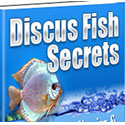
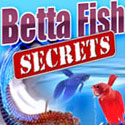
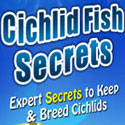
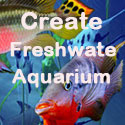






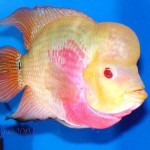
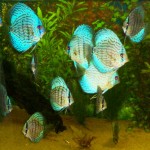
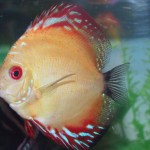

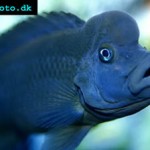
Leave a Reply